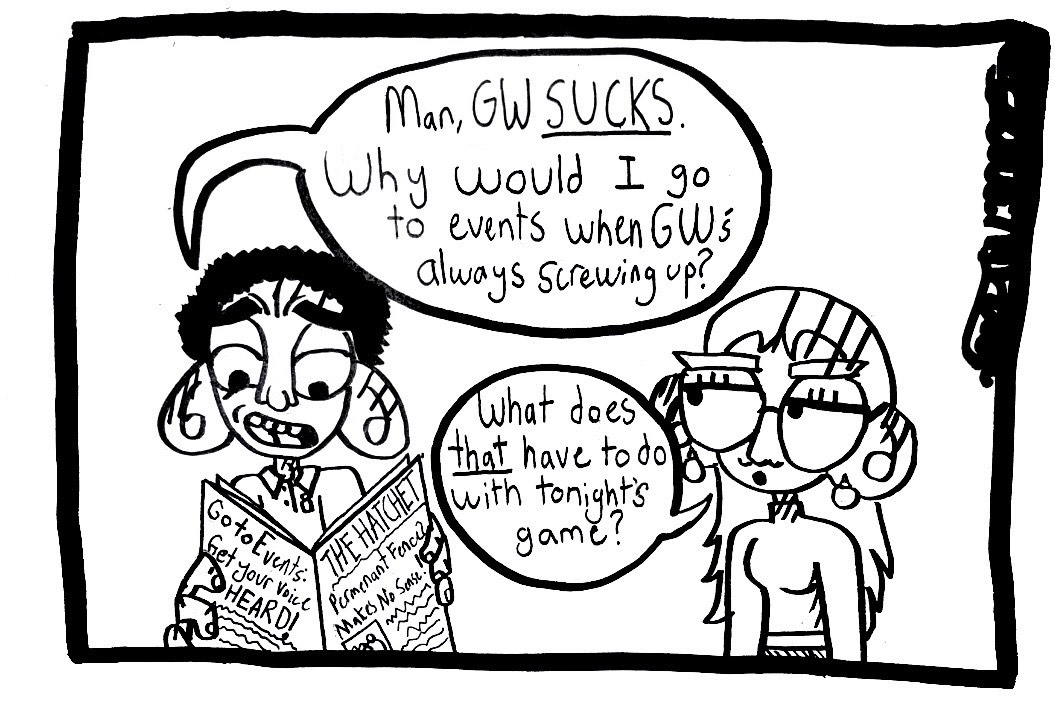The settlement of a lawsuit against the University in the case of Jordan Nott, a former GW student who alleges that GW barred him from campus after he expressed suicidal thoughts, resurrects more issues than it puts to rest. While this particular case is over, GW’s policy of categorically suspending students who pose a danger to themselves or others remains unchanged and in need of serious review. University officials also failed to assuage the fears of students who are reluctant to use counseling services in the wake of this major lawsuit, which garnered national media attention.
The limitation of liability is an important part of any organization hoping to remain financially viable in a lawsuit-prone society. To that end, there are policies that protect GW from liabilities arising from the behavior of students with mental health issues. These students, however, should be viewed as students with needs rather than a potential lawsuit and financial risk. At-risk students are more than just a number in budget assessments.
The “endangering behavior policy” gives the University the right to remove students who pose a suspected danger to themselves and others. In 2004, administrators used this policy to suspend Nott, who shared information with the counseling center and hospital regarding his depression.
The settlement of Nott’s case, in conjunction with GW’s retention of the current involuntary withdrawal policy, indicates a calculation that GW is willing to accept lawsuits from suspended students in the future rather than risk another suicide happening on campus. This is only the slightly better of two bad options – either suspension or a potential on-campus mental health crisis.
There is a fine balance between protection of the University’s risks and providing the tools and care to students who are suffering from depression or some other mental condition. The University’s quick decision to suspend Nott indicates that perhaps our school is focusing too heavily on its own liability interests and not enough on the well being of its students.
Furthermore, there is no evidence that Nott previously had attempted suicide; instead, he first brought his issues to healthcare professionals to prevent dangerous action. It is alarming that, in light of these factors, the University ejected Nott shortly after a hospital visit. Administrators need to carefully evaluate which students pose a dangerous and immediate threat to themselves and other students, and which ones are using official channels to find help.
The current policy’s negative effects reverberate out into the entire campus community. Administrators must be mindful that negative perceptions of mental health services have the potential to exacerbate the very issue this policy attempts to ameliorate.
Rather than continue on this damaging path, University administrators must reinvigorate ongoing efforts to improve counseling services while remaining vigilant about promoting these services to students.
Officially, all visits to the University Counseling Center are confidential. Still, students may see the Nott case as evidence that seeking help may result in disciplinary action. GW administrators must work to combat this negative and inaccurate perception, and ensure that all students feel safe when addressing their mental health.
While the UCC has publicized its non-disciplinary role in the past, these efforts have been limited. These efforts are also unlikely to compete with the amount of negative attention the University received through national press coverage of this lawsuit.
Merely settling the Nott case will not make the poor perception and realities of mental health services at GW go away. It is up to UCC and University officials to engage the campus in a dialogue about mental health that will dispel fears about seeking treatment. Simultaneously, top University administrators must begin their own internal dialogue, questioning their support of a policy that views students as a financial risk while potentially worsening mental health problems through negative perceptions about treatment options.




